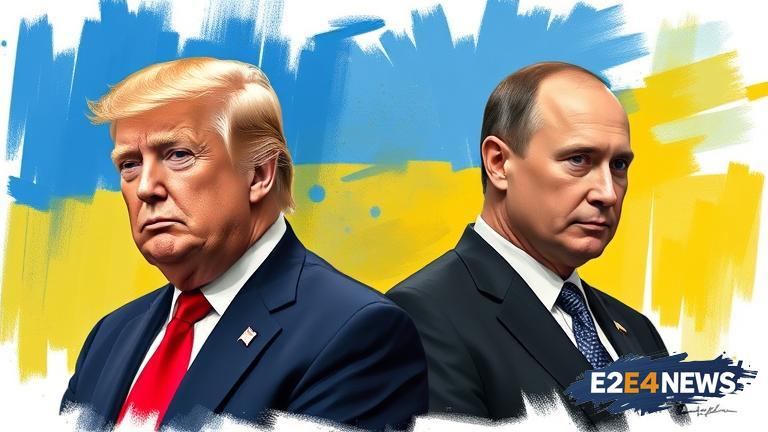The United States has recently implemented tariffs on Russian goods in a bid to influence President Vladimir Putin’s stance on the ongoing conflict in Ukraine. This move is seen as a high-stakes gamble by the Trump administration, as it aims to use economic pressure to achieve a geopolitical goal. The tariffs, which target a range of Russian products, including steel, aluminum, and energy exports, are designed to inflict significant economic pain on Russia. However, experts are skeptical about the effectiveness of this strategy, citing the complexities of international trade and the potential for unintended consequences. One of the main concerns is that the tariffs could lead to a trade war between the US and Russia, which would have far-reaching implications for the global economy. Furthermore, there are doubts about whether the tariffs will actually sway Putin’s stance on Ukraine, given his reputation for being resistant to external pressure. The conflict in Ukraine has been ongoing for several years, with Russia providing military support to separatist groups in the eastern region of the country. The US and its European allies have imposed numerous sanctions on Russia in response to its actions in Ukraine, but so far, these measures have had limited impact. The new tariffs are seen as a escalation of these efforts, but it remains to be seen whether they will achieve their intended goal. Some analysts argue that the tariffs could have a significant impact on the Russian economy, particularly if they are combined with other forms of economic pressure. However, others point out that Russia has a number of options for mitigating the effects of the tariffs, including diversifying its exports and seeking alternative markets. The situation is further complicated by the fact that the US and Russia have a complex and often fraught relationship, with multiple areas of tension and competition. Despite these challenges, the US is pushing ahead with its tariff strategy, which is seen as a key component of its broader approach to dealing with Russia. The effectiveness of this strategy will depend on a range of factors, including the response of the Russian government and the impact of the tariffs on the global economy. As the situation continues to evolve, it is clear that the US and Russia are engaged in a high-stakes game of economic and geopolitical brinksmanship, with significant implications for the future of international relations. The US is also working with its European allies to coordinate a response to the situation in Ukraine, and to develop a unified approach to dealing with Russia. This cooperation is seen as essential for achieving a lasting resolution to the conflict, and for promoting stability and security in the region. In conclusion, the US imposition of tariffs on Russian goods is a significant development in the ongoing saga of US-Russia relations, and it remains to be seen how this situation will play out in the coming weeks and months.





